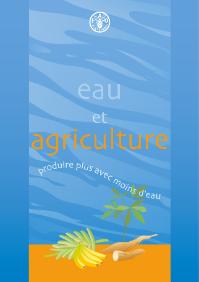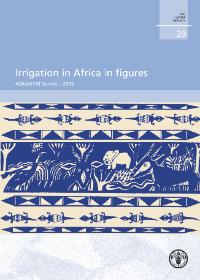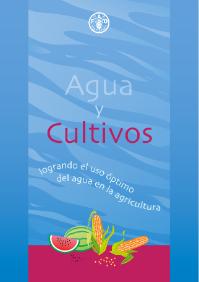Focal point
Location
The Food and Agriculture Organization of the United Nations leads international efforts to defeat hunger. Serving both developed and developing countries, FAO acts as a neutral forum where all nations meet as equals to negotiate agreements and debate policy. FAO is also a source of knowledge and information. We help developing countries and countries in transition modernize and improve agriculture, forestry and fisheries practices and ensure good nutrition for all. Since our founding in 1945, we have focused special attention on developing rural areas, home to 70 percent of the world's poor and hungry people.
Members:
Resources
Displaying 131 - 135 of 5073Eau et agriculture
l'eau - source de sécurité alimentaire Journée mondiale de l'alimentation: 16 octobre 2002
Irrigation in Africa in figures
The AQUASTAT Programme was initiated with a view to presenting a comprehensive picture of water resources and irrigation in developing countries and providing systematic, upto-date and reliable information on water for agriculture and rural development. This report presents the results of the most recent survey carried out in the 53 countries of Africa, and it analyses the changes that have occurred in the ten years since the first survey. Following the AQUASTAT methodology, the survey relied as much as possible on country-based statistics and information.
Irrigation in the Countries of the Former Soviet Union in figures
FAO's AQUASTAT programme, initiated in 1993, aims to meet the demand for information on water resources and use at regional level, with particular emphasis on irrigation and drainage. The objectives of the programme are to collect and present, in a systematic way, data on rural water use at country level.
With an area of more than 22 million km², the former Soviet Union (FSU) covers about 17% of the world and presents a wide range of climatic and physiographic situations, from the arctic zones of Siberia to the arid deserts of Central Asia.Agua y Cultivos
El agua - fuente de seguridad alimentaria/Día mundial de la alimentación: 16 Octubre 2002
Irrigation in the Countries of the Former Soviet Union in figures
FAO's AQUASTAT programme, initiated in 1993, aims to meet the demand for information on water resources and use at regional level, with particular emphasis on irrigation and drainage. The objectives of the programme are to collect and present, in a systematic way, data on rural water use at country level.
With an area of more than 22 million km², the former Soviet Union (FSU) covers about 17% of the world and presents a wide range of climatic and physiographic situations, from the arctic zones of Siberia to the arid deserts of Central Asia.









